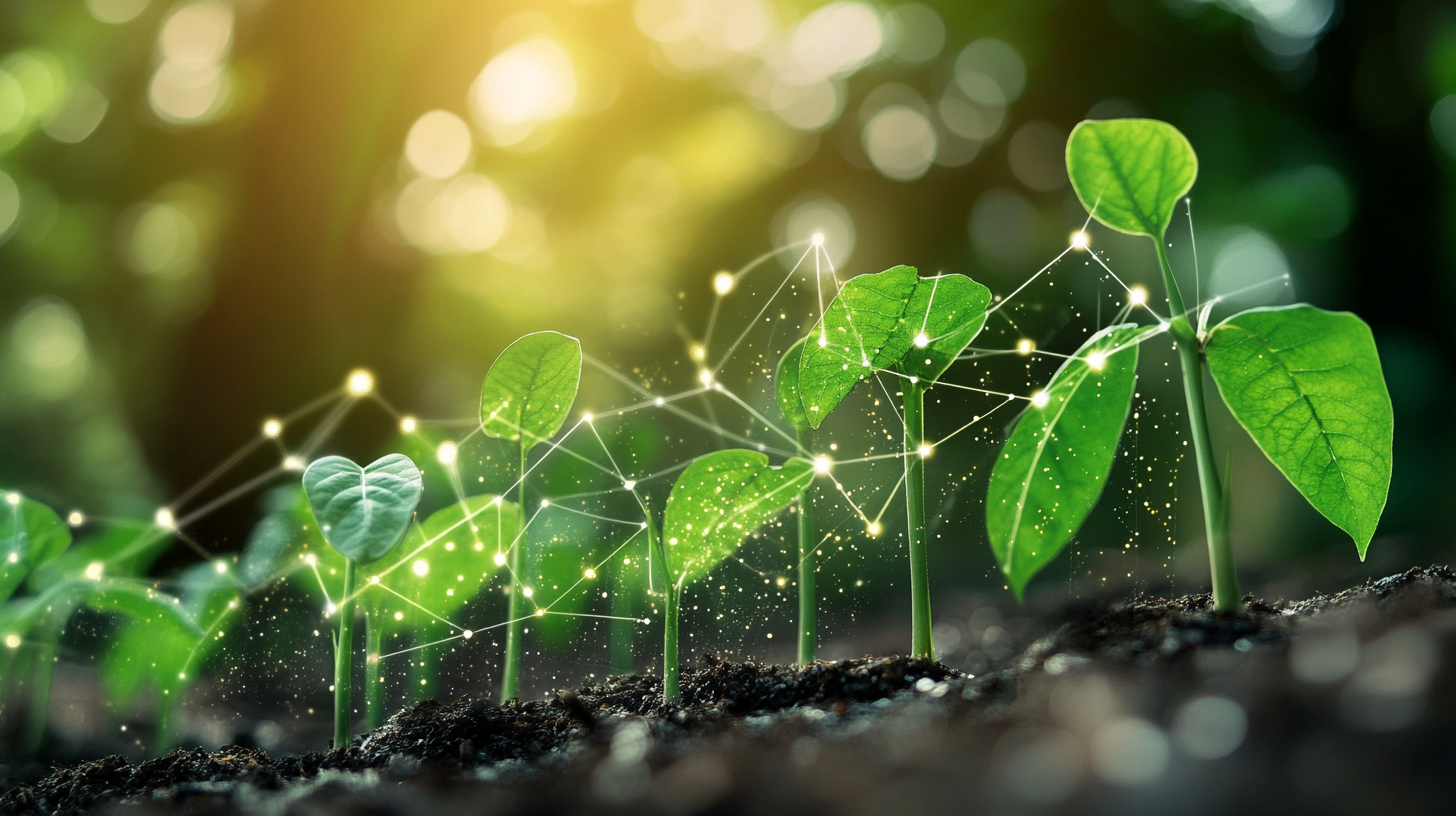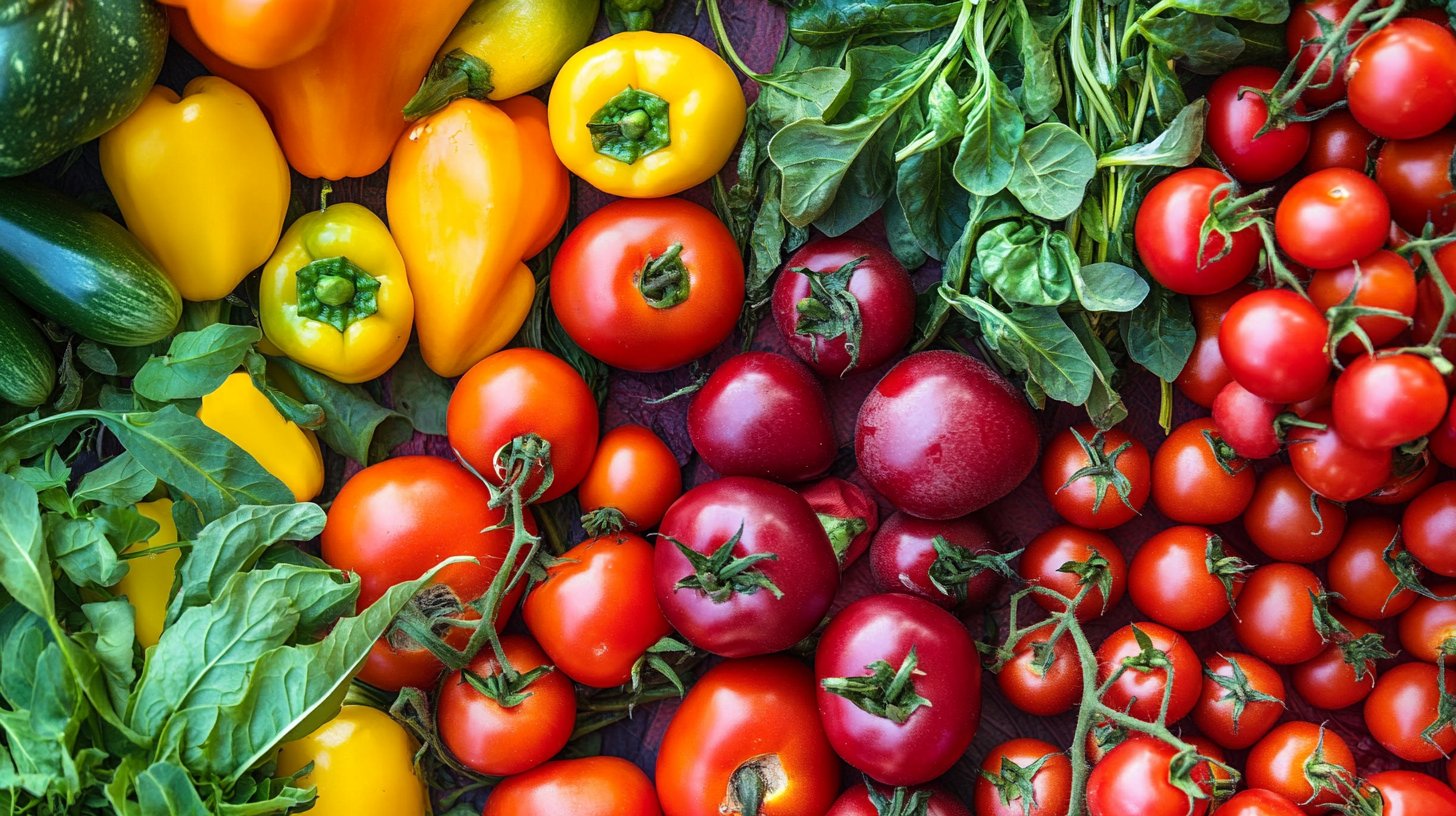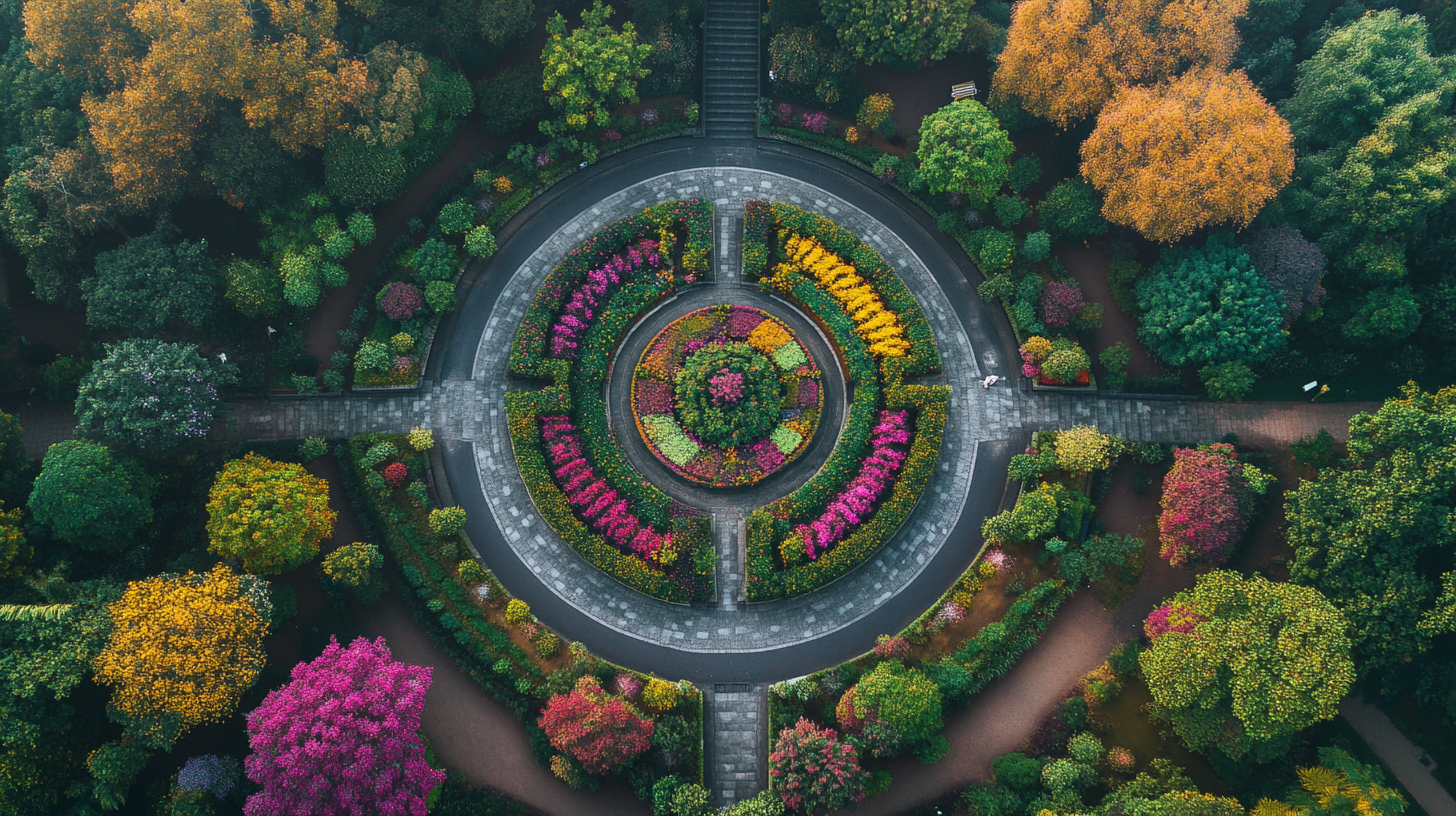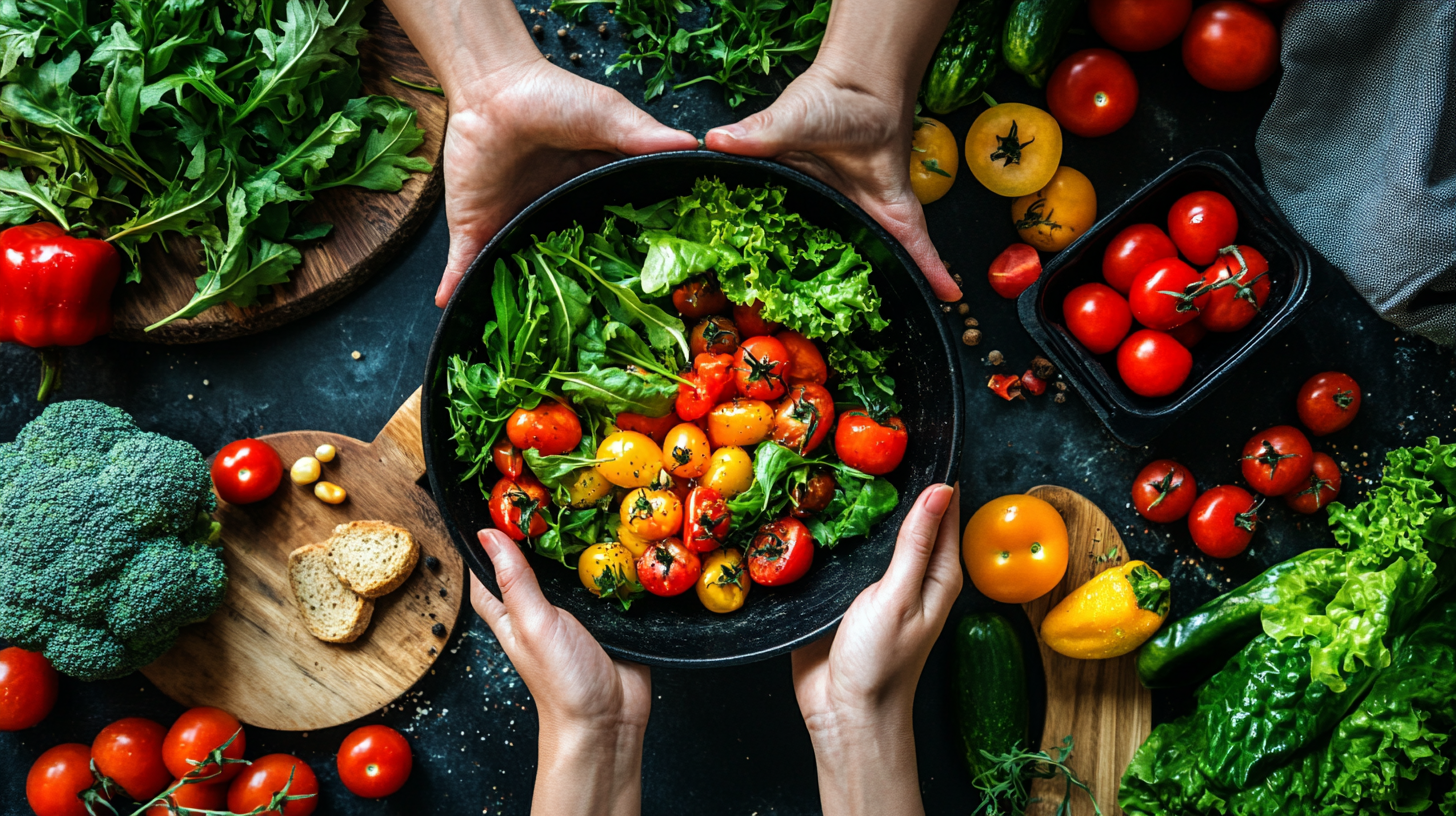Innovations in Horticulture Led Technology Driving Global Market Trends for 2025
The sector of horticulture and floriculture is into a transformation, and the future prophecies from making headlines really within 2025 and beyond. Allied Market Research claims a thorough visit to the global marketplace forecasts for horticulture to reach relishing heights regarding the market volume of around USD 1.18 trillion worldwide by 2025 with an interesting compound annual growth rate (CAGR) of 9.4%. This growth is fueled by advancements in areas such as precision agriculture, vertical farming, and smart greenhouse technologies. Horticulture technology is becoming increasingly important as the cost of surprisingly high productivity against environmental concerns grows against the demand for improved sustainable practices in farming.
In addition, such a trend is supported by the consumers' proclivity toward organic and regional produce, creating more room for the innovative horticultural practices. According to ISHS, the International Society for Horticultural Science, the use of digital tools, including IoT and AI, would revolutionize crop management and disease control introduction to the global marketplace argument on high yield and quality. Breeding and marketing programs in the not very distant future may take a leaf from horticulture-led innovations in its trajectory once 2025 approaches, thus leaving door openings to exciting opportunities for all actors in the supply chain.

Emerging Technologies in Horticulture: Shaping the Future of Farming
Emerging technologies in horticulture change how we approach agriculture and are inventing terms that could boost productivity and maximize sustainability in farm practices. Such innovations in precision agriculture and smart sensors massively change the fundamentals of farming and think outside the box on what we hold as possible in the agricultural realm when it comes to crop cultivation. Data analytics and machine learning enable farmers to develop energy-wise wisdom in resource use and improved crop yield. This could be important, for example, through accessing real-time data from climate-responsive sensors, which would enable efficient timing of irrigation and nutrients delivery that reduces waste and enhances efficiency. On the other hand, vertical farming and hydroponics find popular acclaim in urban spaces where space always poses a problem. Continuous indoor orchards use well-controlled environments for growing fruits and vegetables such that they become productive without having to shift large volumes of produce to the consumer markets. This method, therefore, contributes not only to the conservation of water but also encourages production throughout the year, opening some very promising avenues for addressing food security challenges in densely populated regions. With the continued development of technology, further innovations are expected in the future, such as AI-driven pest management and automated farming systems for improved sustainability while satisfying increased fresh produce demands. The engagement of augmented reality (AR) and virtual reality (VR) technologies in horticulture is a compelling frontier that can be tapped for optimal training and efficiency in operations. Simulating conditions relevant to farming and procedures, it will be possible for tools of extension that provide AR and VR to carry out hands-on experiences for farmers or actors in the process. This makes them more capable of handling the new technologies and practices, which not only allows for workforce empowerment but also creates a culture of continuous learning and adaptation in an industry that is continuously reinventing itself. As these technologies continue maturing, they will certainly be at the forefront of reshaping the future of farming into more resilient and innovative agricultural systems.

Sustainable Practices and Their Impact on Global Market Dynamics
Globally, the horticulture sector is witnessing rapid changes, with sustainable practices forming the movement at market dynamics leading up to 2025. An increasing demand for green solutions has further pushed businesses to adopt ESG principles for securing their footholds in emerging markets. According to a recent report, a notable shift in investment strategies took place, stating that a focus on sustainability by firms translates into a more resilient economic framework amid the challenges of global growth.
As stated in the latest Global Financial Stability Report by the IMF, a growing demand for low-carbon technologies therefore arises whenever an economy attempts decarbonization. This induces greater pressure for the development of sustainable agriculture, and records show that such regions integrating these practices have witnessed a growth in market demand of between 6 and 10 percent for sustainable horticultural products. And in so doing, this transition creates a win-win situation for the environment as well as for business profitability and competitiveness.
In addition, Shanghai Climate Week reiterated the need for ESG education in business schools, stressing that the future horticultural leaders should learn pertaining to sustainable practices. Colleges and universities are already embedding ESG frameworks into programs that prepare graduates to address urgent environment issues while contributing to economic prosperity. Collectively, these initiatives aim to build a vibrant market where sustainability can flourish for the greener future of horticulture and for the entire world.

The Role of Automation and AI in Enhancing Horticultural Efficiency
The horticultural industry is undergoing a transformational change powered by automation and artificial intelligence (AI) that revolutionizes the way we cultivate and manage plants. According to Research and Markets, a report states that the global automated horticulture market is expected to reach $12.41 billion by the year 2025, thus indicating the spontaneous rise in demand for technological solutions in the sector. Automation can help save a lot more labor costs thereby rendering horticultural practices more sustainable and economically feasible.
AI technologies are now part of the optimisation methods for numerous horticultural processes. For instance, based on vast datasets, AI precision farming techniques can predict crop yield, soil health, and planting time. A study conducted by MarketsandMarkets indicates that the AI in agriculture market will increase from $620 million in 2020 to $2.6 billion by 2027, showing an increasing dependence of horticulture on smart technologies. This leads to overall productivity and better resource efficiency by minimizing waste and higher quality productions.
Automated pest detection systems and smart irrigation tools powered by AI increase horticulturalists' ability to make informed decisions. The data collected from IoT sensors can generate real-time insight into environmental conditions that can facilitate timely intervention. A report by Statista mentions that smart irrigation systems can save up to 50% of water in agriculture, emphasizing how technology helps in resource conservation. Looking ahead to 2025, the industry will once again be reshaped by the integration of automation and artificial intelligence in the horticulture arena, giving rise to new market dynamics that would bolster growth and sustainable practices therein.

Consumer Trends Driving Innovations in Horticultural Products
Horticulture is fast changing its course and its future trajectory in all ages, primarily due to consumer needs and wants. As stated in the Global Horticulture Market Report just released, the horticultural products are said to go beyond the $1 trillion barrier as of 2025. This event witnesses a remarkable growth trend with heavy influences from consumer trends. Rising levels of health-conscious consumers have indicated an increase in demand for organic and sustainably grown produce. In fact, organic preference is now more than 45% and is pushing the hands of the producers towards innovation for better cultivation techniques.
Technological advances play a role not only in responding to the market trends set by consumers but also in facilitating them. Vertical farming and hydroponics are both said to have a market growth potential of more than 25% on an annual basis as urban consumers strive to find fresher produce closer to their own homes. This is not just meeting the freshness desired but also addresses the sustainable practices that are being embraced by today's environmentally-conscious consumers. Last but not the least, adoption of precision agriculture technologies like AI and IoT devices would help improve crop management giving rise to efficiency and yields with lesser environmental footprint.
In fact, convenience is also what drives the changes that are happening in product offerings for the horticultural market. Joint research conducted by the American Society for Horticultural Science indicates that 60% of all consumers prefer products pre-packaged and ready to eat. It is also forcing producers into developing new forms of packaging which are as convenient as they are designed to be lightweight and less resource-intensive while meeting this contemporary sustainability ethos of consumers. Thus, the horticulture industry becomes much more favorable in embracing innovative trends that meet the transformation in modern market trends as it brings production forward to keep up with changes relative to improving growth and such promises for a positive future for global horticulture products.
The Future of Urban Agriculture: Innovations for Sustainable Living
Owing to advances in horticultural innovations, urban agriculture is set to become a key player in the sustainability aspect of living. An estimated report at the World Bank indicated a trend towards urban agriculture within the global developing world economy projected at $200 billion in accounting by 2025. This is indicative of a change in food production methods and is attributed to an increase in efficient food supply systems needed to reduce emissions from transportation and allow immediate response to the local demand.
One specific transformation that the future of urban agriculture holds is vertical farming. The stacked-layer-growing method employs advanced techniques such as hydroponics and aeroponics to maximize yield. According to research findings from the Association for Vertical Farming, the average vertical farm can provide up to 100 times more food per square foot than conventional farming methods. These farms are usually set within a city; hence, there is a reduced carbon footprint that food production incurs in transporting food from rural to urban areas.
Intelligent technological intervention has also improved productivity as well as sustainability. With the IoT-enabled sensors in greenhouses, plant health status and environmental parameters are controlled in real-time for optimum resource utilization. Thus, according to a report by the Food and Agriculture Organization (FAO), digital agriculture would result in a maximum increase of 70% in the world production of food by 2050- a critical requirement to meet growing population figures. With the continued urbanization of cities, cityscapes are peppered with technological and horticultural solutions to achieve not only self-sustaining domestic food production but also a cleaner environment in the near future.
